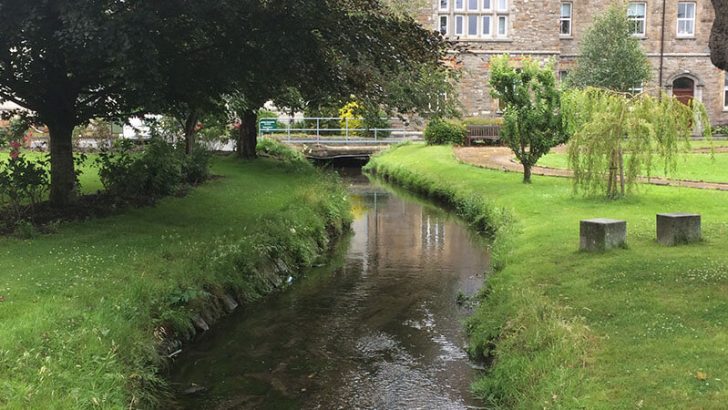The Rivers of Dublin, new revised edition
by Clair L. Sweeney, revised by Gerard O’Connell & Michael Curtis (Dublin City Council / Irish Academic Press, €24.99)
There is a lovely saying, by an unidentified street poet, that has long echoed in my mind, as a description of the modern city: “The fields lie dreaming underneath.”
No matter how life changes and the street are built over, no matters how people and buildings change over time, it is impossible to escape “the lay of the land”. Man can change many things in nature (or so they think), but not the ultimate shape of creation.
Clair Sweeny was an engineer working for the old Dublin Corporation, the “Corpo” of childhood memory. His book The Rivers of Dublin was first published back in 1991, originally in a larger format which gave full room to the maps.
This quickly went out of print so valuable was it to anyone interested in the foundations of Dublin. I have to confess that I came to the conclusion that it was not reprinted as the authorities did not want people to be too easily made aware of the potential for flooding these rivers presented.
This was an unworthy thought. Here is a revised and enlarged edition which presents the material and the maps in smaller but much handier format. It will I think be a revelation to most Dubliners.
There is hardly a place in Dublin that has not got some “secret river” nearby. Past my house there flows the now covered over (converted is the engineers’ name) course of the Swan River, which flows down from Rothmans, through the Swan centre, into the Dodder, passing under Swan Place, directly opposite my house.
Neighbourhood
Yet hardly anyone in the neighbourhood, even those whose modern houses it flows under, suspect the river’s presence. One manifestation of it is that every winter the water rises up out the shore at the start of Morehampton Road, on occasion flooding down into some nearby basements.
I loved the original edition, and am delighted to have at hand for future reference this new edition. In some places these rivers flow freely as does the Dodder and Tolka, but it is never clear quite what is now hidden underground.
In other places these rivers and stream provided drinking water, places to wash clothes, and the sites of small scale (and sometimes not so small scale) industries, in the form of workshops and mills – the early industrialisation of the city.
Because it flows round Dublin Castle and was the mooring place of ships into the middle ages most people are (I think) aware of the Poddle. But as the city has spread out from the medieval Hiberno-Norse core, acres and acres of once rural farming and grazing has been paved over. Of course the result has been floods, as at Drumcondra, which provide a warning that we cannot just do what we want with the land. Nature (or creation if you like) will assert itself.
We seem to have tamed the wild rivers, quelled the petulant streams, but in reality they shape our lives in many ways still. The answer to floods in Dublin, Cork, Athlone and elsewhere, is to have a care what we do (and that means you and dear reader). No amount of anti-flood walls will protect us and allow us to live where we simply should not be living.


 Peter Costello
Peter Costello
